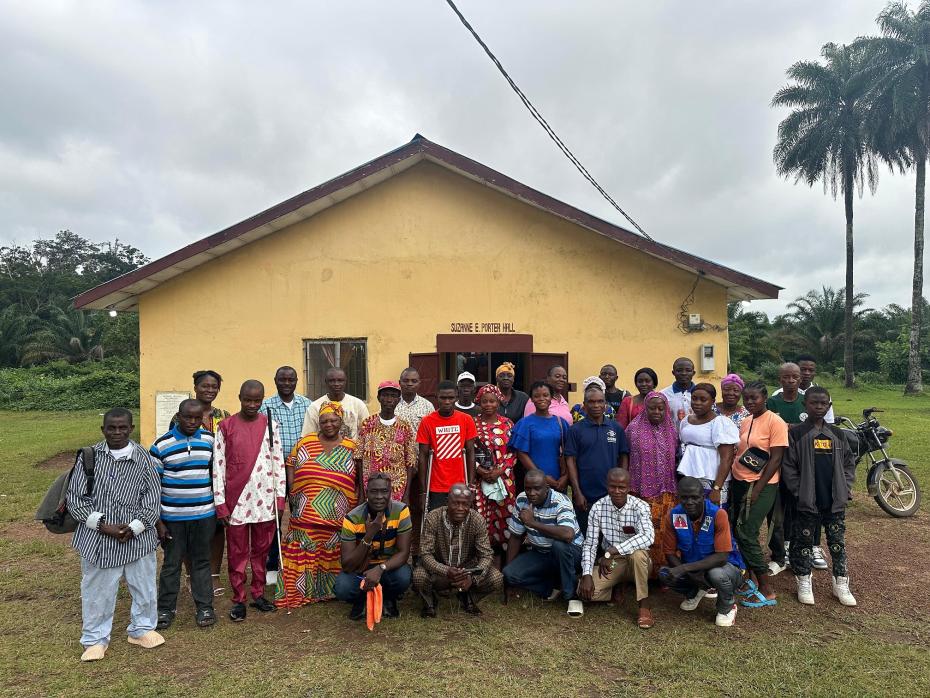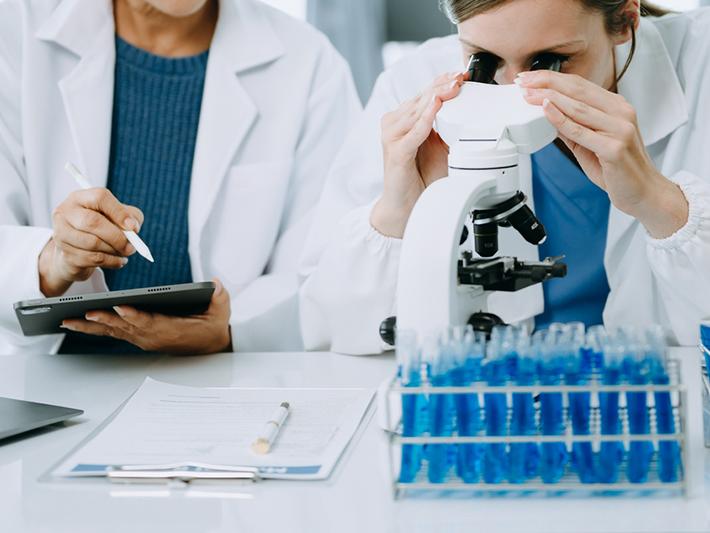
Lessons for co-producing research with affected communities

Community engagement and co-production supports responsive research, equitable partnerships and research impact. Research funders increasingly prioritise community engagement and co-production with marginalised groups when considering funding applications. As research teams, how can we ensure our studies meaningfully engage with communities? It is vital that our work as researchers is genuinely participatory, identifying and responding to diverse community perspectives, rather than merely a tick box exercise.
Our collaborative work with REDRESS, which has been shortlisted for the Times Higher Education award for international collaboration, adopted co-production approaches to improve holistic care for people living in Liberia, affected by neglected tropical diseases that affect the skin, such as leprosy and Buruli ulcer. We hope the model that guided this project offers insight for researchers, whatever their discipline. Our work was guided by our shared understanding and values for community engagement that emphasise “the meaningful, respectful, and fit-for purpose involvement of a range of community members in one or more aspects of the research project”.
REDRESS was developed in response to research demand from within the Liberian Ministry of Health, and included the experiences of persons affected, such as John Brimah, a health worker, REDRESS co-investigator and patient advocate with lived experience of leprosy. People living with skin neglected tropical diseases in Liberia are often highly stigmatised within their communities, and even by health workers. It was therefore critical that we considered the underlying power dynamics at work, when deciding how best to work together. Here we share six key lessons we have learned through our experiences with co-production in REDRESS.
1. Identify who the key communities are
Some communities to engage are obvious, such as health decision-makers, persons affected by the condition being studied, and health workers, but there may be other less obvious but still important communities. Before starting REDRESS, we carefully considered who people with skin neglected tropical diseases engage with. This led us to involve other actors, such as traditional and faith healers, who are often the first source of care for people with skin neglected tropical diseases in Liberia. Working with them, using participatory methods such as photovoice and vignettes, developed our understanding of the care they provide within their communities. Additionally, we started to build relationships for their stronger collaboration with the health system, encouraging earlier referral of persons with skin neglected tropical diseases to biomedical care.
- Spotlight guide: THE Awards 2024: learn from the best in UK and Irish higher education
- THE podcast: unlocking people power through citizen science
- The secret to long-term international research projects is trust and transparency
2. Carry out a power analysis
Consider the power dynamics for each community and how these might create barriers to genuine involvement in co-producing knowledge, then think about how to overcome these barriers. We found Gaventa’s power cube helpful in thinking through the levels, spaces and forms of power that can influence a person or community’s engagement within the study.
Thinking through the barriers that certain communities might face when engaging with a study, means that we can proactively seek solutions to overcome these. For REDRESS this included using participatory methods, such as photovoice, vignettes and body-mapping, especially among persons with limited literacy; inviting multiple representatives of certain communities to meetings rather than a token single invitee; and creating opportunities for small group discussion.
For example, we used a world cafe approach during our mid-term review meeting, which was held halfway through the intervention period to reflect on progress and identify improvement. The world cafe meant that persons affected freely shared their thoughts and opinions in a small group of peers, before nominating a representative to share with the wider group.
3. Be creative
Create a community engagement and involvement plan for optimal ways to engage communities meaningfully through the research cycle. This could involve persons affected by health conditions to act as co-researchers, within community advisory boards, in participatory methods and as part of workshops to co-design, evaluate and disseminate learning together.
4. Invest in community engagement
Allocate time and funds to invest in training and mentoring co-researchers to take on increasing responsibilities. REDRESS was a four-year study, which allowed our team the opportunity to gradually work with co-researchers to build their skills and confidence to take on increasingly complex responsibilities. For example, we started with simple data collection, building in opportunities for co-analysis, intervention development workshops and leading aspects of research dissemination at county, national and international levels. For future studies we would like to build in personal development plans with co-researchers.
5. Be flexible
Implement and monitor community engagement and involvement work throughout the research cycle. Routinely reflect on how things are going with communities and be willing to adapt and flex if things need to improve. For example, we worked with community advisory boards to develop their own “benchmarks” for success. Building on suggestions from regular community advisory board meetings, and during discussion sessions at the mid-term review, we identified ways for them to develop and implement their own action plans, such as carrying out radio campaigns and marketplace sessions to raise awareness about skin neglected tropical diseases. During the mid-term review meeting we actively sought to engage a wide range of stakeholders to celebrate early successes and to identify areas for improvement and jointly develop solutions.
6. Think about sustainability of engagement structures
Consider how they can be supported beyond the life of the research project. By investing in community engagement for individuals and institutions, we sought to encourage sustainability of the collaborative co-production approaches introduced through REDRESS. Changing attitudes towards engagement of persons affected by skin neglected tropical diseases now means that people affected are routinely included within Ministry of Health neglected tropical diseases decision-making meetings. Finally, people affected by skin neglected tropical diseases have mobilised to establish and register as a network called the Network for Persons Affected by NTDs Liberia (NEPA-NTD).
We have found it helpful to follow these six steps for strengthening our collaboration. We would love to learn from other collaborations as well – are there additional steps that you found helpful for co-producing research with communities? If so, please share with us.
Rosalind McCollum is senior research associate at Liverpool School of Tropical Medicine.
Liverpool School of Tropical Medicine was the winner of International Collaboration of the Year at the Times Higher Education Awards 2024 #THEAwards. A full list of shortlisted candidates can be found here.
If you would like advice and insight from academics and university staff delivered direct to your inbox each week, sign up for the Campus newsletter.


